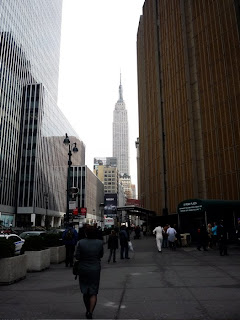A Tale of Two Alamos
Photo below from Wednesday, March 2, 2011 5:13 p.m. "Alamo," (1967) a sculpture by Tony Rosenthal (1914-2009), Astor Place, New York, New York. Rosenthal said that his European-born wife, having read a lot of American history, started talking about the Battle of the Alamo and told him that he should name this sculpture "Alamo." He said OK. Many people just call it the "Cube." (Source of story - this video interview with the artist on The Hamptons website.)
Photo below from Thursday, March 3, 2011 4:04 p.m. (CST) The Mission San Antonio de Valero, San Antonio, Texas. The story of how the building came to be known as the Alamo remains vague. Some contend that the Alamo refers to the company of soldiers once garrisoned there. Others talk of the Alamo as the Spanish word for the cottonwood tree, prominent in the area. The name grew in popular acceptance in the few years prior to the Battle of the Alamo (February 23 - March 6, 1836). The battle took place 175 years ago this week.
Both images by Walking Off the Big Apple, who will be reporting from Texas this weekend.
Photo below from Thursday, March 3, 2011 4:04 p.m. (CST) The Mission San Antonio de Valero, San Antonio, Texas. The story of how the building came to be known as the Alamo remains vague. Some contend that the Alamo refers to the company of soldiers once garrisoned there. Others talk of the Alamo as the Spanish word for the cottonwood tree, prominent in the area. The name grew in popular acceptance in the few years prior to the Battle of the Alamo (February 23 - March 6, 1836). The battle took place 175 years ago this week.
Both images by Walking Off the Big Apple, who will be reporting from Texas this weekend.







Since you're there . . .
ReplyDeleteHi, Teri. I'm the woman in Portland, Oregon, who rewards herself for doing work by reading your posts. Thanks again for your wonderful blog.
I'm a Valero/Alamo fan from way back, and I've been wondering about something I think you could shed some light on by being in proximity to the site. Or at least I think you too might be puzzled/fascinated by the thing that's got me.
I recently researched a (verifiable) 1840s, engraved, handcolored, British school-atlas map of North America that my uncle bought in London in the 1970s.
I got excited when, in poring over the map with a magnifying glass, I found "Valero" on the spot where "the Alamo" happened 175 years ago.
Now given that, as you say, "Mission San Antonio de Valero" was the original name of the mission, it would make sense to find "Valero" there, except that all the other missions on the map of the whole of N. America (and Central America and part of South America) have "M" in front of them.
If I could be there, I'd ask a curator, Is it a curious thing that "Valero" is on this impressive map instead of "Alamo," since the map was engraved 5000 miles (a lightyear then) and perhaps a decade away from the event itself, by which time it was known around at least the English-speaking world as "the Alamo"?
It seems to be distinctly set off to the left side of "San Antonio" as an important separate entity, not as a mission but something else.
Maybe the 1836 "battle of Valero" was a big thing in the London Illustrated News a "short" time after it happened (1, 2, 3 months after? How quickly would 1830s-40s England get the news?) And then even though it became famous all over the world as "the Alamo" within a decade, no one bothered to tell John Dower and the other engravers at his well-established, world-renowned firm on Paternastor Row, London, about it.
It would, of course, be a thing of great importance for them to have only the most accurate, up-to-the-minute information on their maps because they went into school atlases that had to last a long time.
There's no Denver north of it, by the way, only "Osage Village." And the word "village" appears infrequently on the plains and elsewhere, sometimes, no doubt, as a precursor to a future town or city. My point here being that to have "made the grade" as a named place on such a document would mean, I would think, that it had somehow achieved a certain level of fame in the world. But as "Valero"??
Is this esoteric/obsessive or what?! And by all means, Teri, if it's of no interest to you, please say, "Not at this time, Caroline." But I've been puzzling over this for a long time, and there you are in beautiful downtown San Antonio on an Alamo adventure, and I simply couldn't resist.
Thanks, Teri. Safe trip home!
Your fan Caroline
P.S. I can send a couple of photos: one of the whole map and a closeup of "Valero" and area.
Thanks you for this wonderful and fascinating account of the English map with "Valero." I will try to find out answers to your questions, but perhaps historians with knowledge of the specific history and cartography may find this and share their knowledge with our readers.
ReplyDelete